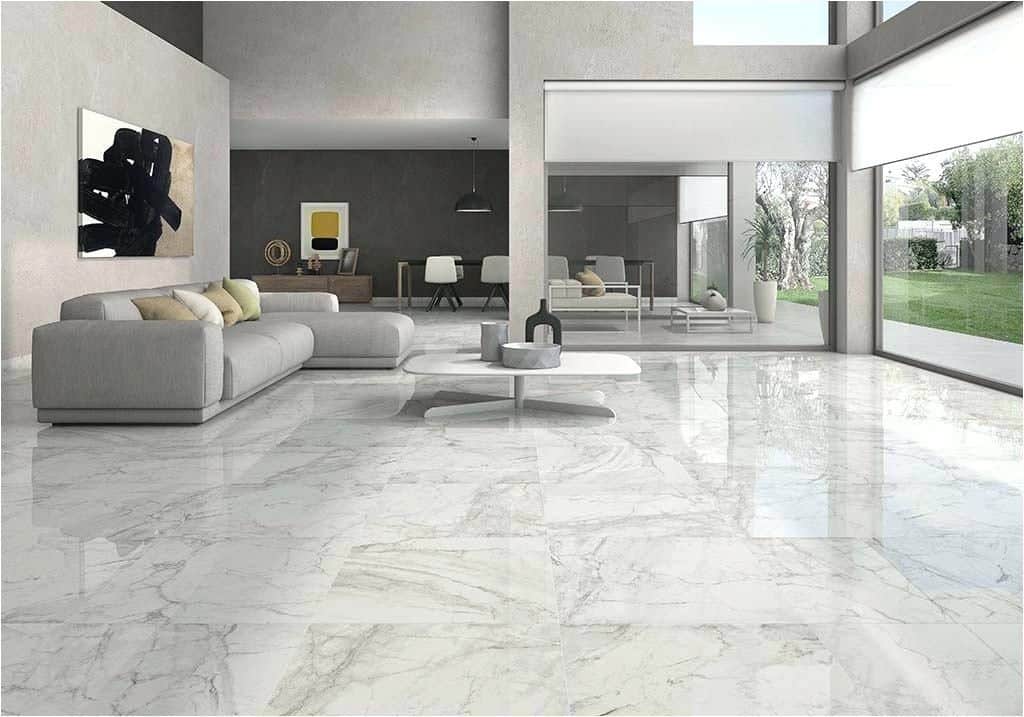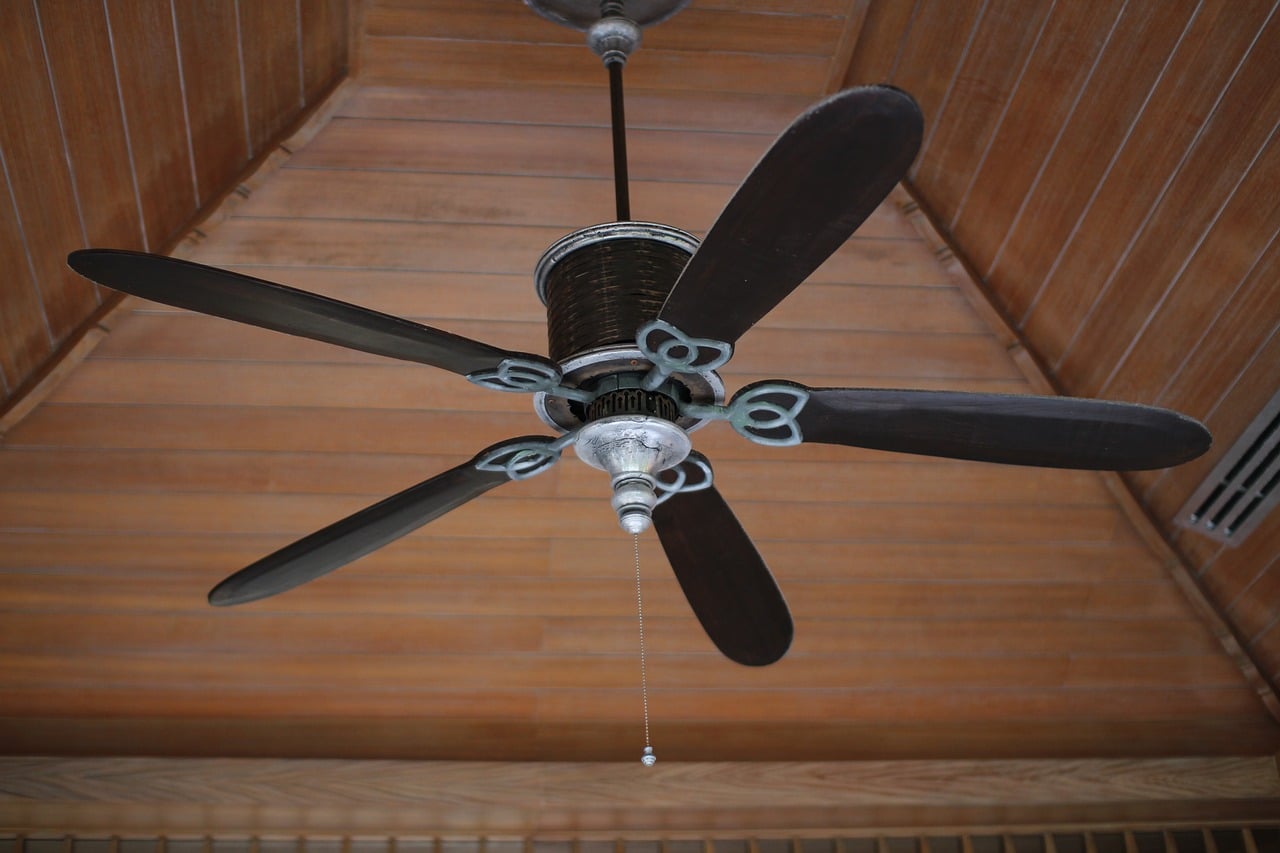Marble flooring has been a feature of elegant architecture since time immemorial. It sophisticated good looks continue to make it one of the popular flooring choices.
It’s one of the most recognizable — and beautiful — natural building materials, thanks to its striking grain patterns and creamy colors.
While Marble is most commonly associated with Italy. Hundreds of different types of Marble are available from quarries around the world, each with its own distinct personality.
Pros
- Marble flooring has an upscale, sophisticated and elegant, appearance
- This flooring adds value to your home
- Marble flooring is made from a natural material
- Marble flooring can easily be polished to regain its sparkle
- This type of flooring can accommodate radiant floor heating
Cons
- Marble flooring usually require sealing
- Marble flooring is made from Porous stone. It scratches and stains easily
- This choice of flooring will have you reaching deep into your pockets
- Slippery and brittle
- Marble flooring is not warm like carpets
The Geology of Marble
Marbles are metamorphic rocks. They result from transformation under the heat and pressure of a sedimentary stone, such as limestone, into a harder stone. Marbles, after this process, adopt beautiful colors and veined patterns.
Marble is a common natural stone that is quarried. Marbles can be cut into slabs and tiles for use in floors, wall tiles, and countertops in both residential and commercial buildings.
Sometimes Marble can be confused with granite. Granite is an igneous rock formed by volcanic magma, while Marble is a metamorphic rock formed from a sedimentary rock.
Marble usually has a wavy veined pattern, while granite usually has a pebbly or dotted color pattern.
Marble Flooring Cost
A marble tile floor is relatively simple to maintain once built. It requires just the same sweeping and damp mopping that a ceramic tile floor needs.
However, since Marble is porous, you should avoid allowing water to puddle and sit on the surface. Standing water will corrode the stone and cause it to discolor.
Due to its origin as sedimentary limestone, Marble has a pH that is on the base (alkaline) side. This means that whenever it comes into contact with acidic substances, it may undergo a chemical reaction.
Foods, sauces, beverages, and cleaning items are all examples of this. Unfortunately, the discoloration stains left by these products are normally irreversible.
After installation, a penetrating chemical sealer and a surface sealer may be used to avoid this. However, the surface sealer must be reapplied annually for maximum security.
Jobs needing complex configurations or cutting costs will cost more to install. While jobs requiring a basic layout of square or rectangular tiles will cost less to install.
Maintenance and Repair
A marble tile floor is relatively simple to maintain once built, requiring just the same sweeping and damp mopping that a ceramic tile floor needs.
Since Marble, unlike ceramic tile, is porous, you should avoid allowing water to puddle and sit on the surface. Standing water will corrode the stone and cause it to discolor.
Due to its origin as sedimentary limestone, Marble has a pH that is on the base (alkaline) side. This means that if it comes into contact with acidic substances, it will undergo a chemical reaction.
Foods, sauces, beverages, and cleaning products are all examples of this.
Unfortunately, the discoloration stains left by these products are normally irreversible. One can avoid this stains by using a penetrating chemical sealer, as well as a surface sealer after installation.
The surface sealer must be reapplied annually for maximum security.
It is common knowledge that marbles are fragile material and can be scratched, scraped, and chipped. This is particularly true for polished marbles. The imperfections would stand out more against the smooth, flat solid surface.
Unfortunately, scratches on marble floors cannot be easily repaired without fully removing the damaged material.
Design
The most important advantage of marble floor tile is that it instantly elevates the look of a space. It lends a room, a regal air that is difficult to replicate.
Marble comes in a variety of colors and patterns. They can also come in stunning multicolor variations. This allows for a wide range of design possibilities.
Tiles may also be cut into rectangles and triangles of varying sizes to create more complex mosaic installations.
Every piece of marble tile used on every floor is one-of-a-kind because it is a natural product; there is nothing else like it anywhere in the world.
The individuality of marbles is evident by how multi-colored Marble can be. The color changes are even more subtle and muted with more solid-colored Marble, but the floor will always stand out with its own personality.
Unlike most natural stones, Marble can take a very high polish and achieve a silky smooth and shimmering appearance when properly cared for.
This look of elegance and glamor evokes the most heightened sense of elegance in space.
Marble Flooring Installation

Marble tile is built similarly to ceramic tile or any other natural stone tile. The tiles are glued down with a thin-set adhesive after a sheet of cement board (backer board) is applied over the subfloor.
After the adhesive has dried, a cementitious grout is used to fill the gaps between the tiles. However, Marble is unlike most ceramic tile, which only allows the grout lines to be sealed.
Marble necessitates sealing the entire surface immediately after installation and then every year or so afterward.
Despite the fact that the methods are identical to those used to install ceramic tile, DIY installation can be difficult. Marble tile is a heavy yet brittle stone, and unprepared DIYers can end up wasting a significant amount of material due to breakage.
The subfloor must be properly prepared. Since a Marble is a natural stone, it is much more difficult to cut and drill, necessitating the use of specialty equipment.
For these purposes, the majority of people choose to have marble floor tiles installed by professionals.
Since Marble is a good heat conductor, it can be used in a number of below-surface radiant heating systems. One of the most significant drawbacks of marble tile is its coldness underfoot, which can be eliminated with radiant heating.
A marble floor heated from beneath with radiant coils can provide an unexpected and delightful rush of cozy warmth, particularly on cold winter mornings.
Top Brands of Marble Flooring
The majority of marble tiles are manufactured from raw stone imported from China, India, Portugal, Iran, Turkey, Greece, Italy, Spain, Brazil, and Egypt.
Countertop slabs, floor tiles, and other items by domestic stonework can be manufactured from the Marble and sold to retailers.
The type of Marble you are purchasing is more critical than the company’s commercial brand.
Here are some of the more well-known forms of Marble used in homes:
- Breccia marble possesses a striking grain and swirl pattern that often resembles bubbles trapped in rock. Breccia is generally darker, warm shades of tan, gold, and red.
- Carrara is the classic Marble linked with Greek and Roman architectural designs. Carrara is often used for adding details to the house. It’s a warm white marble streaked with subtle bands of gray.
- Calacatta marble is sometimes mistaken for Carrara marble. Classic calacatta is traditionally a more pure white color with bolder stripes than modern calacatta. The rarer of the two, Calacatta, is prized for its upscale look. As a result, it is more costly.
Types of Marble Finishing
Marble tiles come in an assortment of sizes and shapes, ranging from large rectangles to miniature mosaics. The cost per square foot ranges from $5 to $50.
Like many other natural stone forms, marble floors can be difficult to build and a difficult DIY project. Professional installers can cut Marble into a variety of shapes to make curves and patterns.
This can cost $15 to $50 per square foot in installation fees.
Marble flooring tiles come in two basic finishes:
- Polished Marble has a high sheen finish that highlights the stone’s beauty and grain. However, particularly when wet, the finish can be slick and slippery. To prevent sliding, one technique is to use area rugs liberally. Polished marble floors take a lot of maintenance to keep them looking fine.
- Honed Marble is polished, but only to a minor extent. Although the flooring won’t be as beautiful, it’ll be a lot more practical, in high-traffic areas or wet rooms like kitchens and bathrooms, where the slightly rougher surface texture will provide better traction.
Marble has a porous surface since it is a natural stone.
The flooring can be refinished every six to twelve months with a premium stone sealer made for Marble to keep it looking flawless.
Marble is also one of the softer stones; high heels and dog paws are not the best friends of Marble.
Unfortunately, Marble has a well-deserved staining reputation. Any acidic liquids, such as orange juice, should be washed up right away. And water, according to some homeowners, can cause staining.
The best way to live with marble flooring is to accept that it will grow a unique patina over time.
Comfort and Convenience
Marble can be a dangerously smooth and slippery surface when polished. This can be a concern in kitchens and bathrooms where water is likely.
These floors are harsh on bones and joints in the event of a fall. If you’re using a highly polished Marble, use non-slip rugs in these areas, or choose a less polished marble tile.
Marble, like all stone and ceramic tile, is famously cold underfoot. However, like other hard flooring materials, Marble is an excellent foundation for radiant floor heating systems.
It can use hydronic tubing or electrical wiring to connect to the underlayment. This can turn a cold flooring material into one that is incredibly cozy.
Purchase at least one extra box of marble tiles and hold them in storage once the Marble is placed. Replacement marble tiles from the same batch guarantee that they come from the same quarry.
This makes it much easier to fit tiles if one breaks, cracks, or becomes discolored.
Is Marble Flooring Right for You?
Marble is the most elegant flooring material available. it is a temperamental stone that needs special attention during installation and aftercare. Before you spend the money on marble flooring, be mindful of its drawbacks.









